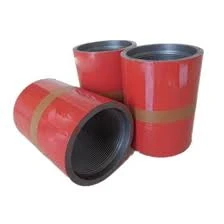- Afrikaans
- Albanian
- Amharic
- Arabic
- Armenian
- Azerbaijani
- Basque
- Belarusian
- Bengali
- Bosnian
- Bulgarian
- Catalan
- Cebuano
- Corsican
- Croatian
- Czech
- Danish
- Dutch
- English
- Esperanto
- Estonian
- Finnish
- French
- Frisian
- Galician
- Georgian
- German
- Greek
- Gujarati
- Haitian Creole
- hausa
- hawaiian
- Hebrew
- Hindi
- Miao
- Hungarian
- Icelandic
- igbo
- Indonesian
- irish
- Italian
- Japanese
- Javanese
- Kannada
- kazakh
- Khmer
- Rwandese
- Korean
- Kurdish
- Kyrgyz
- Lao
- Latin
- Latvian
- Lithuanian
- Luxembourgish
- Macedonian
- Malgashi
- Malay
- Malayalam
- Maltese
- Maori
- Marathi
- Mongolian
- Myanmar
- Nepali
- Norwegian
- Norwegian
- Occitan
- Pashto
- Persian
- Polish
- Portuguese
- Punjabi
- Romanian
- Russian
- Samoan
- Scottish Gaelic
- Serbian
- Sesotho
- Shona
- Sindhi
- Sinhala
- Slovak
- Slovenian
- Somali
- Spanish
- Sundanese
- Swahili
- Swedish
- Tagalog
- Tajik
- Tamil
- Tatar
- Telugu
- Thai
- Turkish
- Turkmen
- Ukrainian
- Urdu
- Uighur
- Uzbek
- Vietnamese
- Welsh
- Bantu
- Yiddish
- Yoruba
- Zulu
tubing crossover
Understanding the Tubing Crossover in Oil and Gas Operations
The oil and gas industry is rife with complex operations and specialized equipment, one of which is the tubing crossover. This term refers to a specific piece of equipment used in the drilling and production phases, crucial for ensuring the efficient flow of hydrocarbons from the reservoir to the surface. Understanding tubing crossovers is vital for professionals in the energy sector, as they play a significant role in optimizing production and maintaining well integrity.
A tubing crossover essentially serves as a transition point between two different types of tubing or piping systems within a wellbore. In operations where various diameters or materials of tubing are utilized, the crossover enables seamless connections. This is particularly important in complex well designs where multiple completions or zones need to be accessed or isolated.
There are several types of tubing crossovers, including those that connect different sizes of tubing, such as transitioning from a larger diameter production tubing to a smaller diameter injectant line
. Each design is created with specific performance requirements in mind, including pressure ratings, material compatibility, and connection integrity.tubing crossover

The design and material choice for tubing crossovers are critical due to the extreme conditions often faced in production environments. Operating under high pressures and corrosive substances, these components must be robust and reliable. The commonly used materials for tubing crossovers include carbon steel, stainless steel, and various alloys, chosen based on the specific environmental conditions of the reservoir.
Installation and maintenance of tubing crossovers also require a high degree of technical expertise. Proper installation ensures that there are no leaks or failures that could lead to significant production losses or environmental hazards. Regular inspections are essential to identify signs of wear and tear, corrosion, or other issues that could compromise the system's integrity.
Moreover, with advancements in technology, many companies are innovating the design and production of tubing crossovers to enhance their performance and reliability. The incorporation of non-destructive testing methods and real-time monitoring systems is becoming more prevalent, allowing for predictive maintenance and minimizing operational downtime.
In conclusion, the tubing crossover is a critical component in the oil and gas industry, facilitating the efficient and safe transport of hydrocarbons from the subsurface to the surface. An in-depth understanding of their design, functionality, and maintenance is essential for professionals in the field, contributing significantly to the overall efficiency and safety of drilling and production operations. With ongoing advancements, the future looks promising for improved tubing crossover technologies, ultimately benefiting the entire industry.
-
Tubing Pup Joints: Essential Components for Oil and Gas OperationsNewsJul.10,2025
-
Pup Joints: Essential Components for Reliable Drilling OperationsNewsJul.10,2025
-
Pipe Couplings: Connecting Your World EfficientlyNewsJul.10,2025
-
Mastering Oilfield Operations with Quality Tubing and CasingNewsJul.10,2025
-
High-Quality Casing Couplings for Every NeedNewsJul.10,2025
-
Boost Your Drilling Efficiency with Premium Crossover Tools & Seating NipplesNewsJul.10,2025







